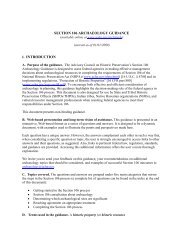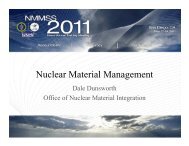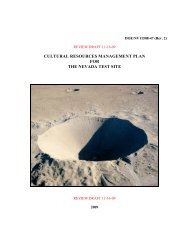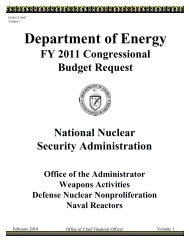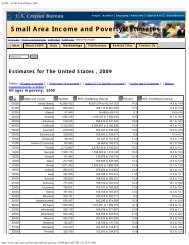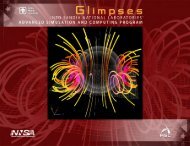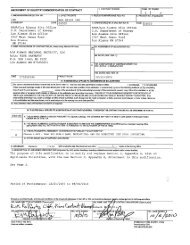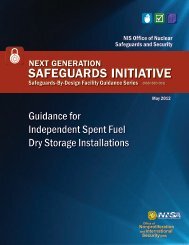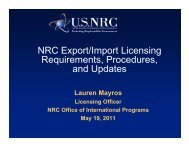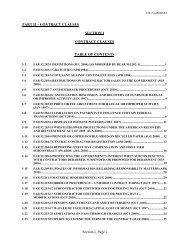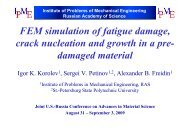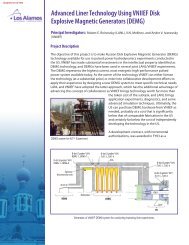ASC Code Strategy - National Nuclear Security Administration
ASC Code Strategy - National Nuclear Security Administration
ASC Code Strategy - National Nuclear Security Administration
Create successful ePaper yourself
Turn your PDF publications into a flip-book with our unique Google optimized e-Paper software.
1.0 introduction<br />
From the Manhattan Project, through the Cold War, to the current Stockpile Stewardship Program, our<br />
capability to ensure the performance and safety of nuclear weapons has relied on the accuracy of scientific<br />
calculations. Now, as we work to sustain an aging stockpile—while maintaining a moratorium on fullscale<br />
nuclear testing—we are more dependent than ever on the predictive accuracy of our integrated<br />
codes for the annual assessment of our nation’s nuclear stockpile.<br />
The following code strategy introduces an essential evolution in the <strong>ASC</strong> Program that recognizes both<br />
its technical needs and the need to better utilize our resources. Since the inception of the Program, we<br />
have been exploring several approaches to weapons simulation simultaneously, supporting parallel efforts<br />
at the national laboratories to ensure robust peer review and to converge on the best numerical<br />
approaches and physical models to simulate the time evolution of a nuclear device. This multipronged<br />
approach has enabled us to deliver accurate and robust models of nuclear performance. In the process, we<br />
have learned a great deal about the most efficient ways to proceed and have developed technical<br />
approaches that will allow us to manage the enterprise in a sustainable manner.<br />
To make optimal use of our resources, we have defined a national code portfolio focused on an essential<br />
set of simulation tools. This suite of tools will continue to ensure accurate representation of the data<br />
obtained from the days of nuclear testing and, at the same time, use modern representations of the most<br />
accurate models of essential physical processes, maximizing our ability to achieve the ultimate goal of a<br />
real predictive capability.<br />
We have reached a point in the lifecycle of the <strong>ASC</strong> Program where transitioning to a modernized<br />
national code portfolio, as articulated in this strategy, is a necessary next step. This strategy positions the<br />
<strong>ASC</strong> integrated codes to take advantage of advanced computational algorithms for scaling to problem<br />
sizes that are orders of magnitude larger than current capabilities. Such advances are necessary to reach<br />
the weapons program’s goals in predictive science and Quantification of Margins and Uncertainties<br />
(QMU). Furthermore, it builds the basis for the <strong>ASC</strong> Program to broaden the reach of the <strong>ASC</strong><br />
simulation codes to application areas in national security that are outside of the realm of nuclear weapons<br />
and stockpile stewardship.<br />
This is a crucial time for the Stockpile Stewardship Program, and I strongly believe that effective<br />
execution of this strategy will take the program to the next level.<br />
— Robert Meisner<br />
NA-121.2<br />
1



